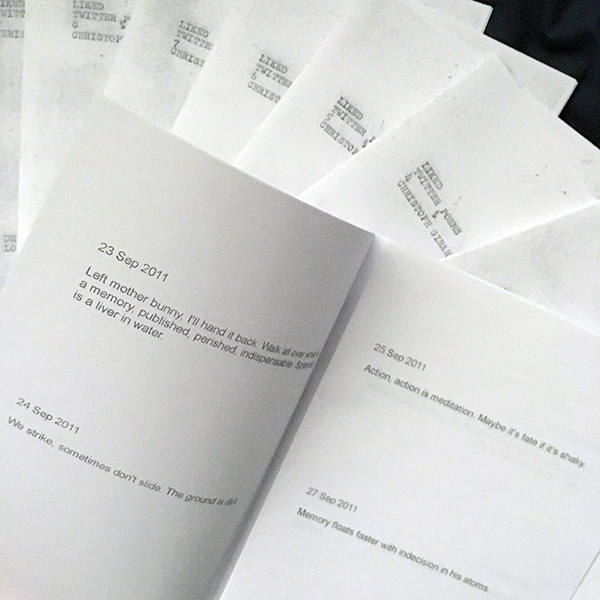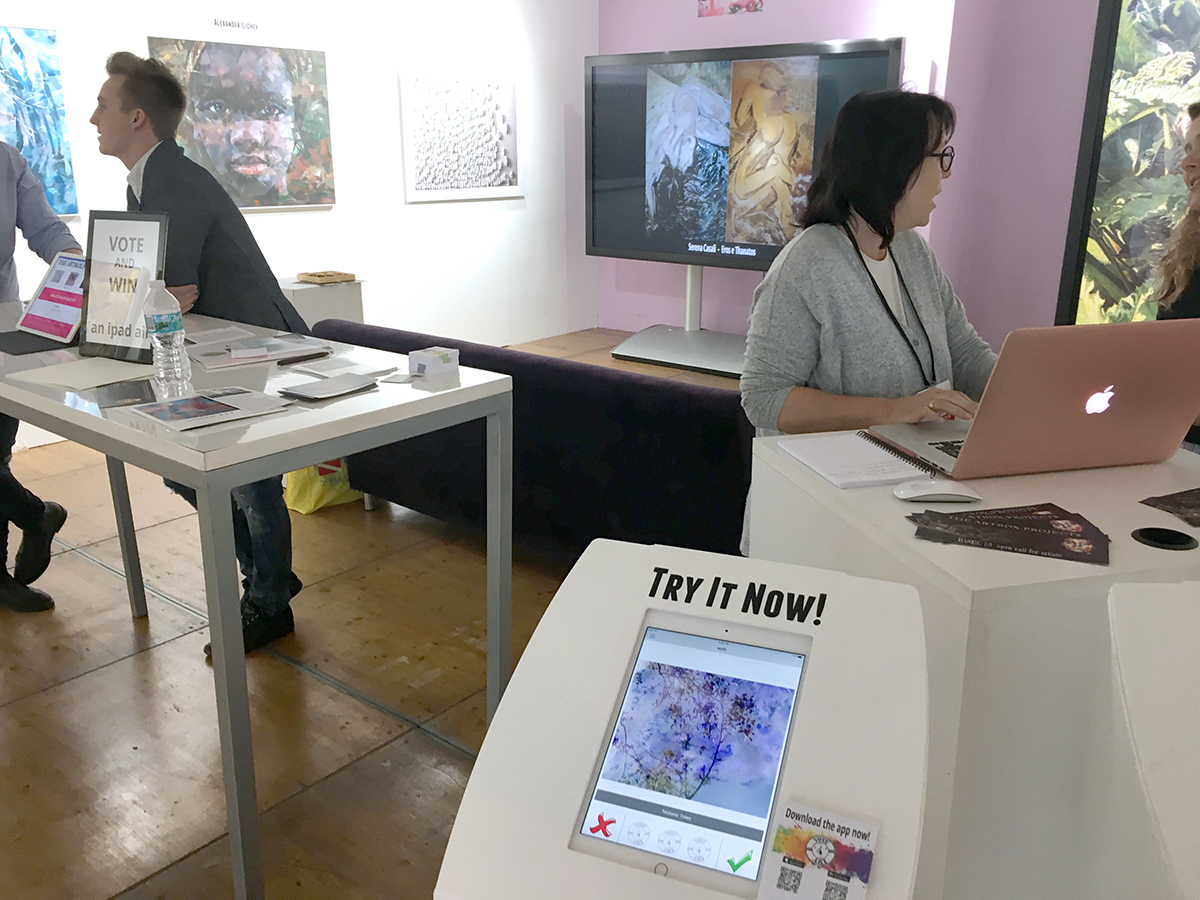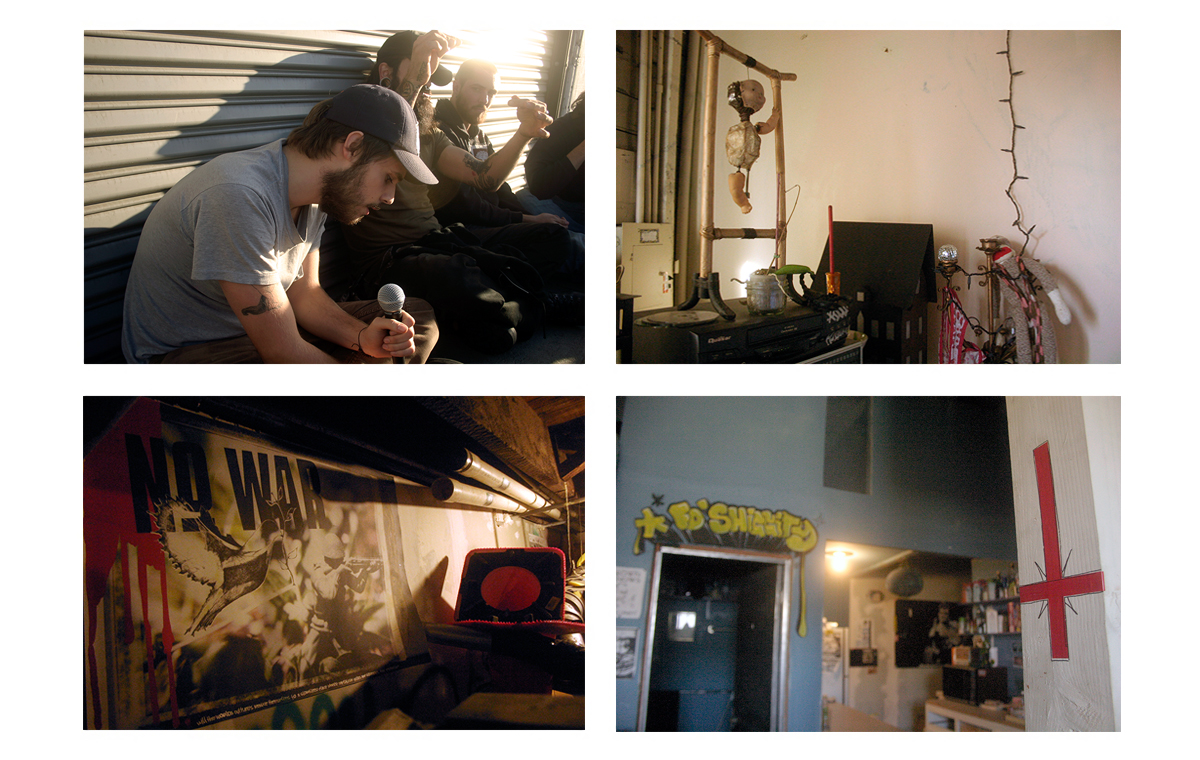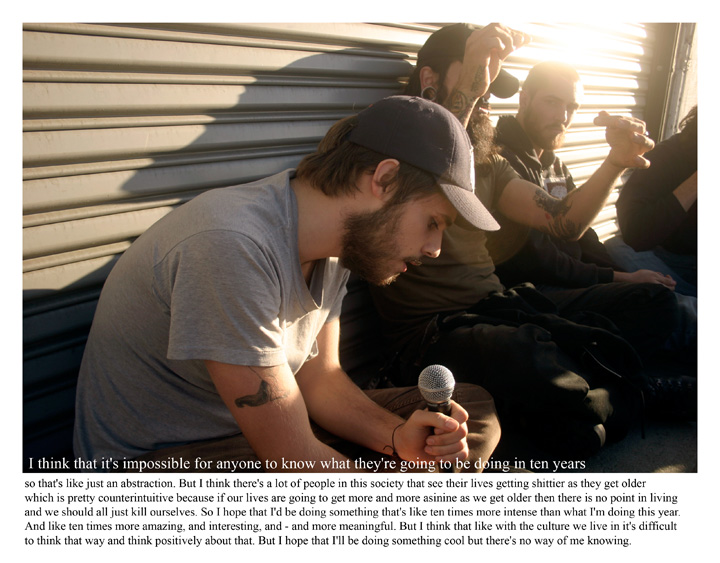A New Media Death Poem
Shadow/Shadows/Tomb, a new media video collage death poem, runs tombstones on four video screens. The videos run on a program called Max/MSP/Jitter behind the interface. The poem consists of four streaming films that are systematically arranged into a box, which create a larger poem. This happens as each of the inscriptions are juxtaposed next to each other.
Shadows/Shadows/Tomb streams for over two days without looping. This video poem, despite its name, reflects how life continues on after death. Hundreds of year old tombstones show their wear and tear underneath overgrown plant life and the creatures amid them. Video recorded on my Canon 7D also shows spiderwebs, dead leaves and flies, anything that was on top of the tombstones within the cemetery.
The poem is structured on the constraint of filming objects within the cemetery. Each individual poem uses words that compositionally and grammatically fit into the area of the box it streams in. Verbs, primarily, and objects that visually correspond to the top images are placed on the top two boxes. Nouns, exclamations and other objects are placed in the bottom two boxes to end the poem.
Chris Girard Explains Shadow Shadows Tomb, 2011
Shadow Shadows Tomb, 2011, New Media/Video Collage. This above video offers a 20 minute recording of the poem.
Nunhead, Not Heptonstall
Originally, the new media collage poem was supposed to focus on the poet Sylvia Plath and not myself. The original plan I proposed was to travel to Heptonstall, West Yorkshire, where Plath’s tombstone is located. I would film engravings and inscriptions of texts on tombstones within the perimeter of the cemetery. But the filming actually took place at Nunhead Cemetery in London, which is a cemetery proximally located to where I live.
Tombstones in each respective cemetery visually look different by the way that the environment interacts with them. Religious and cultural backgrounds of the people buried are revealed through age, use of the materials, and the inscriptions left by family members. Yet the tombstones essentially look old tombstones that belong to an old cemetery. These relics of the cemetery are documented through the particles of words and surfaces filmed from my findings.
You can find an interview about this death poem with artist Claudia Crobatia at A Course in Dying.
Life and Death
Plants and trees grow over the tombstones and the sounds of people walking and children playing symbolize both death and life. The use of cemeteries as parks in London and the plant life, animals and insects that surrounds the area becomes a poem that challenges death. Lives that intertwine next to objects that signify death show the cyclical nature of death. It shows how death is not static but becomes part of an ever-changing presence. The challenge of death, for example, is to stay dead. Death is an omnipresent re-casting of historical moments mixed within the present moment. Plants and creatures that move atop of the surface of the tombs and signify an ‘afterlife’.
The poem suggests my bodily presence in terms of the ‘author function’. Allusions of the poem document my movements, choice of engravings and artifacts that I choose to film. It is located as well by its proximity to my residence near the cemetery, which is less than a half a mile away. The new media poem references myself, places myself, as a collagist, into a working role of writing a story about identity.
This process of working with identities that are constructed after death became an important part of my research focus. Shadow/Shadows/Tomb illustrates this process through the use of a technology that is considered new media. The poem is categorized as a new media poem as the video clips run film clips in endlessly different combinations from a single location. It becomes a poem about my own identity based upon my proximity.
This proximity incorporates where I lived at the time, Brockley, London SE42JJ, to create this poem. This further goes to allude about how my identity, which is a construct of the reader, never stays the same. The proliferation of an author is as always a construct of the reader, and is therefore indistinguishable to attributes given to other authors. The role that is constructed for me will be ever-changing and wavering like with how Shadow Shadows Tomb is constructed, and meaning will endlessly change.

The Max/MSP/Jitter patch streams each of the four boxes or screens with film clips.
Max/MSP/Jitter Streams Simultaneous Video Clips
Shadow Shadows Tomb incorporates new media technology into the poem with the use of the video codes that run on a Max/MSP/Jitter patch. Constantly changing screens with a poem that figuratively never ends suggest that meaning could be determined on the process itself. Four video clips are executed and encoded on Max/MSP/Jitter to run on a loop that constantly changes. An awareness that this poem will not begin for a while becomes apparent after one spends time with it. Each of the four displays play a hand-picked selection of 12 to 15 videoclips that separately run 12, 13, 14 and 15 six second video clips. And each of the displays runs a different number of video clips. This is because two or more of the displays would otherwise constantly play the same words and objects on the screen in repetition.
An idea of this poem is for it to constantly show a different sequence of images to have unexpected and very surprising results. The poem will show different combinations of words, objects and creatures for 54.6 hours or 2.275 days before repeating itself. I calculated this by multiplying the clips together. I then multiplied this result by six seconds to calculate the total number of seconds how long it will play before combinations begin to duplicate again. I then divided the total length in seconds by 60 to calculate the minutes and divided again by 60 to calculate the hours and divided again by 24 to calculate the days.
The individual images become familiar when they constantly appear and reappear. There are a total of 54 film stills. The four displays combined with words, creatures or scenes will show different sequences for over two days. Each of the screens individually run a poem on loop as well. Changing word combinations elude to a death poem by its proximity. It changes scenes in this filmed cemetery that familiarizes the viewer. Ambient sounds, which are combined from each of the four scenes, resonate the familiarity of this location. Children playing, birds chirping and people walking over leaves show a familiar resonance of life within the proximity of the cemetery.
Evidences of life in the streaming poem make the poem more fluidly composed with the rhythm that it carries. They contextualize its British location of the cemetery as the type of fauna and accents are distinctly heard within the perimeters of these grounds. The ambient sounds imply that death is as present as life. It becomes lifelike with the sounds that reverberate its presence.



















